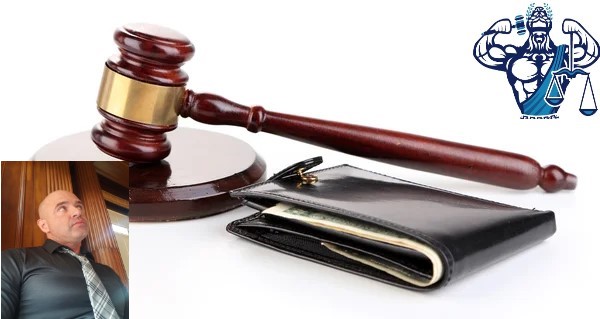Here at the Law Office of Vincent Miletti, Esq. and the home of the #UnusuallyMotivated movement, we take pride as a resilient and dependable legal services firm, providing such services in both a traditional and online, web-based environment. With mastered specialization in areas such as Employment and Labor Law, Intellectual Property (IP) (trademark, copyright, patent), Entertainment Law, and e-Commerce (Supply Chain, Distribution, Fulfillment, Standard Legal & Regulatory), we provide a range of legal services including, but not limited to traditional legal representation (litigation, mediation, arbitration, opinion letters, and advisory), non-litigated business legal representation and legal counsel, and unique, online legal services such as smart forms, mobile training, legal marketing, and development.
Still, here at Miletti Law®, we feel obligated to enlighten, educate, and create awareness about how these issues and many others affect our unusually motivated® readers and/or their businesses. Accordingly, to achieve this goal, we have committed ourselves to create authoritative, trustworthy, & distinctive content. Usually, this content is featured as videos posted on our YouTube Channel https://www.youtube.com/channel/UCtvUryqkkMAJLwrLu2BBt6w and blogs that are published on our website WWW.MILETTILAW.COM. With that, the ball is in your court and you have an effortless obligation to subscribe to the channel and sign up for the Newsletter on the website, which encompasses the best way to ensure that you stay in the loop and feel the positive impact of the knowledge bombs that we drop here!
As the authoritative force in Employment Law, it only seemed right to introduce one of the many upcoming series where we remain persistent in introducing a variety of topics, which will look to not only educate but also deliver in a sense that only Miletti Law® can. In this regard, this blog is Part IV of our short series on “Trademark Clearance Search Checklist,” in which we explore another core area of trademarks. Objectively, this checklist acts as a hands-on guide that can be used to determine the suitability and availability of a client’s proposed service mark or trademark for federal registration and/or use in commerce. In that regard, this guide has two objectives; (1) how to evaluate the registrability and strength of a proposed mark and (2) to enlighten you about factors that need to be considered and the process of assessing the outcomes of a trademark clearance search. We have started with the first objective.
In Part I, we mentioned that a trademark clearance search starts with the collection of all relevant information concerning the proposed mark. These include (1) mark identification, (2) meaning of the mark, (3) actual or proposed use of the mark, (4) date of first use, (5) considerations for the marketplace, (6) relative strength of the mark, and (7) eligibility for federal registration.
How to Evaluate the Registrability & Strength of Proposed Trademark/Service Mark
In Part III, we dealt with “Relative Strength of the Mark” and explored the five categories of the spectrum of distinctiveness and its importance in conducting a trademark clearance search. Feel free to hit this link https://milettilaw.com/blog/f/evaluating-the-registrability-strength-of-proposed-service-mark-2 and learn more about this area of trademark clearance search. Accordingly, to move this discussion forward, we have explored “Eligibility for Federal Registration,” the final consideration when conducting a trademark clearance search.
Eligibility for Federal Registration
Codified under 15 U.S.C. § 1052, the federal registration of certain types of marks is prohibited by the Lanham Act. This means that after the rest of the information has been gathered, the next step would entail assessing whether the proposed mark in question may be barred from being registered. Due to the possibility of a statutory bar causing a denial in registration, any unnecessary expenses that would be incurred by the client could be avoided by ensuring that the above analysis has been conducted early in the evaluation process. Based on the U.S. trademark law, statutory bars to proposed mark registration include:
- Pursuant to 15 U.S.C. § 1052(a), which is (Section 2(a)) of the Lanham Act, registration has been historically barred due to the use of scandalous, immoral, and/or disparaging matter in a proposed mark. However, referring to it as disparagement, the Supreme Court has held that these provisions violate the First Amendment’s Free Speech Clause, which implies that the use of scandalous, immoral, and/or disparaging matter in a proposed mark may not be valid grounds for barring registration.
- As used on the specimen record, a proposed mark that fails to function as a service mark or trademark for the specified products.
- Pursuant to 15 U.S.C. § 1051(a) & 15 U.S.C. § 1051(b) concerning use-based applications and intent-to-use applications, respectively, an applicant lacks a bona fide intent to use the proposed mark or has not made a bona fide use of their mark in commerce.
- The lack of acquired or inherent distinctiveness in trade dress (for example, product configuration or design or product packaging).
- Pursuant to 15 U.S.C. § 1052(e)(5), marks consisting of any matter that is functional as a whole.
- Pursuant to 15 U.S.C. § 1052(e)(4), marks that are “typically merely a surname.” However, if they have attained distinctiveness as per the spectrum discussed in the previous blog under this series, they may be registered.
- Pursuant to 15 U.S.C. § 1052(e)(3), marks that possess deceptive geographical misdescription of the specified products.
- Pursuant to 15 U.S.C. § 1052(a), marks comprising or consisting of deceptive matter.
- Pursuant to 15 U.S.C. § 1052(c), marks comprising or consisting of a signature, portrait, or name of a deceased President to the U.S. during the life of his widow, if any, without the widow’s written consent, or another living person without their written consent.
- Pursuant to 15 U.S.C. § 1052(b), marks comprising or consisting of the coat of arms, flag, or other insignia of the U.S., or any foreign nation, or of any municipality or state, or any simulation thereof.
- Pursuant to 15 U.S.C. § 1052(a), marks that comprise or consist of matter that may falsify a relation with national symbols, beliefs, institutions, and/or persons, living or dead.
- Pursuant to 15 U.S.C. § 1064(3), marks that are generic, as discussed in the previous blog.
- Pursuant to 15 U.S.C. §1052(e), marks that are merely descriptive of the client’s products.
In Part V and the final blog under this miniseries, we shall switch gears and hammer on “How to Analyze Outcomes of Trademark Clearance Search.”
Stay tuned for more legal guidance, training, and education. In the interim, if there are any questions or comments, please let us know at the Contact Us page!
Always rising above the bar,
Isaac T.,
Legal Writer & Author.
 Professional Legal & Business Services And Representation - English & Espanol!
Professional Legal & Business Services And Representation - English & Espanol!

 314-648-2586
314-648-2586 CALL US NOW
CALL US NOW








